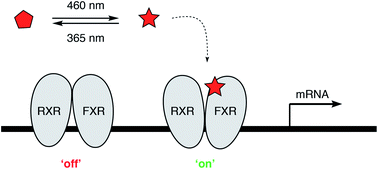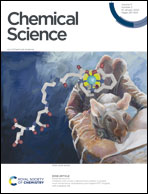Optical control of the nuclear bile acid receptor FXR with a photohormone†
Abstract
Herein, we report a photoswitchable modulator for a nuclear hormone receptor that exerts its hormonal effects in a light-dependent fashion. The azobenzene AzoGW enables optical control of the farnesoid X receptor (FXR), a key regulator of hepatic bile acid, lipid and glucose metabolism. AzoGW was derived from the synthetic agonist GW4064 through an azologization strategy and is a metabolically stable, highly selective photoswitchable FXR agonist in its dark-adapted form. Upon irradiation, the thermally bistable ‘photohormone’ becomes significantly less active. Optical control of FXR was demonstrated in a luminescence reporter gene assay and through light-dependent reversible transcription modulation of FXR target genes (CYP7A1, Ostα, Ostβ) in liver cells.



 Please wait while we load your content...
Please wait while we load your content...